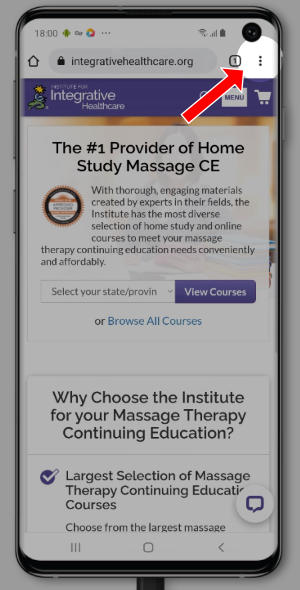

Massage therapists and bodyworkers know that it is important to learn new skills and techniques in our practices for a variety of reasons: it keeps us interested in the work, it allows us to offer more and better service to our clients, and it keeps our clients interested in our work as well. Learning new skills on a continual basis also keeps us up to date and at the peak of professionalism in our field. But we don’t often take a good look at the various ways how we learn these new skills.
In this article, we take a look at informal learning, formal learning, ELearning and distance education to better understand our options.
Informal Learning
The first way to learn new skills in our practices is through informal learning. This does not necessarily mean we are learning on our own, as we may be working with a mentor who has more experience with a particular modality or we may team up with a colleague to figure out some new technique. Informal learning with and from others is also called social learning, and it is a valid way to gain skills and experience, and to pass along some of that knowledge when those new to the field seek you out for help.
According to William Glasser, “we learn 10% of what we read, 20% of what we hear, 30% of what we see, 50% of what we both hear and see, 70% of what is discussed, 80% of what we experience personally and 95% of what we teach to someone else.” While the accuracy of these numbers may be disputed, the concept seldom is. When we engage with the material, discuss it and practice it, and finally teach what we learned to someone else, it becomes ours in a way simply reading the material doesn’t compare to.
When engaging in informal learning, it is helpful to keep in mind the work of Howard Gardiner, who identified several types of intelligence: linguistic, mathematical, musical, kinesthetic, spacial, interpersonal and intrapersonal. Knowing how you learn best can serve you when you begin looking for learning materials on some new topic. For example, are you linguistic in nature? Would you prefer to read the information rather than work hands-on right off the bat? Or are you kinesthetic by nature, preferring to get right into the hands-on portion of learning a new technique. Perhaps you are visual (spacial) and prefer to see it done first, and then you are comfortable performing the new techniques.
Understanding your own learning style is vital in both formal and informal learning as it allows you to ask for and seek out the most appropriate learning materials.
One of the cons of informal learning that many educators point out is the fact that you don’t know what you don’t know! Think about that. You are not an expert on the technique and therefore do not know what, exactly, you need to learn to encompass the technique or modality successfully. Professional education providers engage in extensive fact finding to determine this point; what precisely is the scope of content to be taught and learned here?
Formal Learning
If you are not comfortable with informal learning, or perhaps you do not have that luxury as you need continuing education credits, you can engage in formal learning. This learning is designed by qualified professional educators; thus the scope of content material and the qualities of the learning materials has been chosen with care. Also, there is typically some sort of assessment built in to a formal learning model.
- Formative Assessment – or the means used to find out how things are going, allowing you to rethink the way to proceed. Formative assessment may look like summative assessment and may consist of multiple-choice exams and matching, but the purpose is to keep learners on track.
- Summative Assessment – on the other hand, is intended to assign a grade. There is no plan for further instruction and this is a formal assessment of the student’s mastery of the materials.
There are several options for formal learning: classroom, ELearning and home study or online learning of the material.
- Classroom learning is what most of us are comfortable with, and can also involve an element of social learning. Learners all arrive to one classroom and an instructor leads us through the material. Usually the instructor will tell us the information (linguistic learning), then show us (spacial, visual learning), and finally ask us to perform the technique (kinesthetic learning). Classroom learning can be difficult for massage therapists, as getting together in one location at one time can prove challenging. For this reason, many choose ELearning or home study (or online learning) for their continuing education needs.
- ELearning generally takes place online, with a firm start and stop date for a course, during which a group of students (cohorts) engage with the learning material online, and converse with each other either in synchronous or asynchronous conversations. Home study, online learning is generally a singular endeavor. Learners will sign up for their own home study course and will begin immediately, working at their own pace and working alone until they’re finished. For many people this is ideal as it allows them to work learning and continuing education into their busy schedules. Home study, or online learning, is typically slightly less expensive as well, because there is no overhead involved in securing a suitable classroom and filling it each time.
Both ELearning and home study learning have the benefit of having been designed by adult learning professionals and content experts. This gives you the benefit of not needing to know what you do not know! Once you have read a course description and determined it is what you are looking for, you simply sign up and follow along, learning the material as it is presented to you, engaging with the learning material and utilizing the assessment elements to determine your levels of success in mastering the materials. Many massage therapists find that this option works best for them in filling their continuing education needs.











